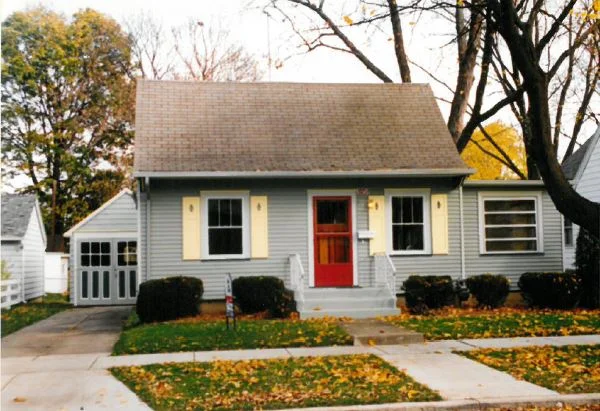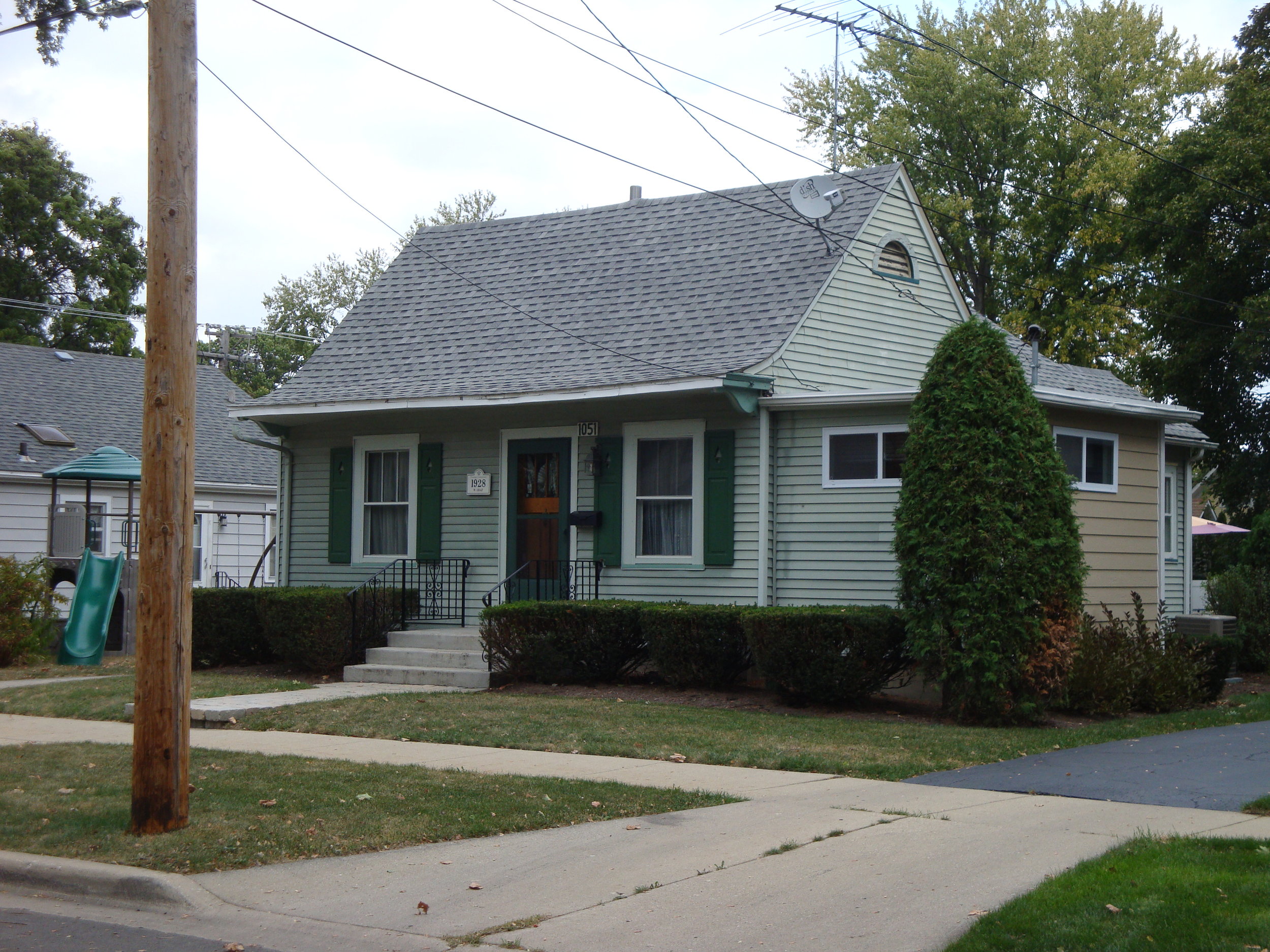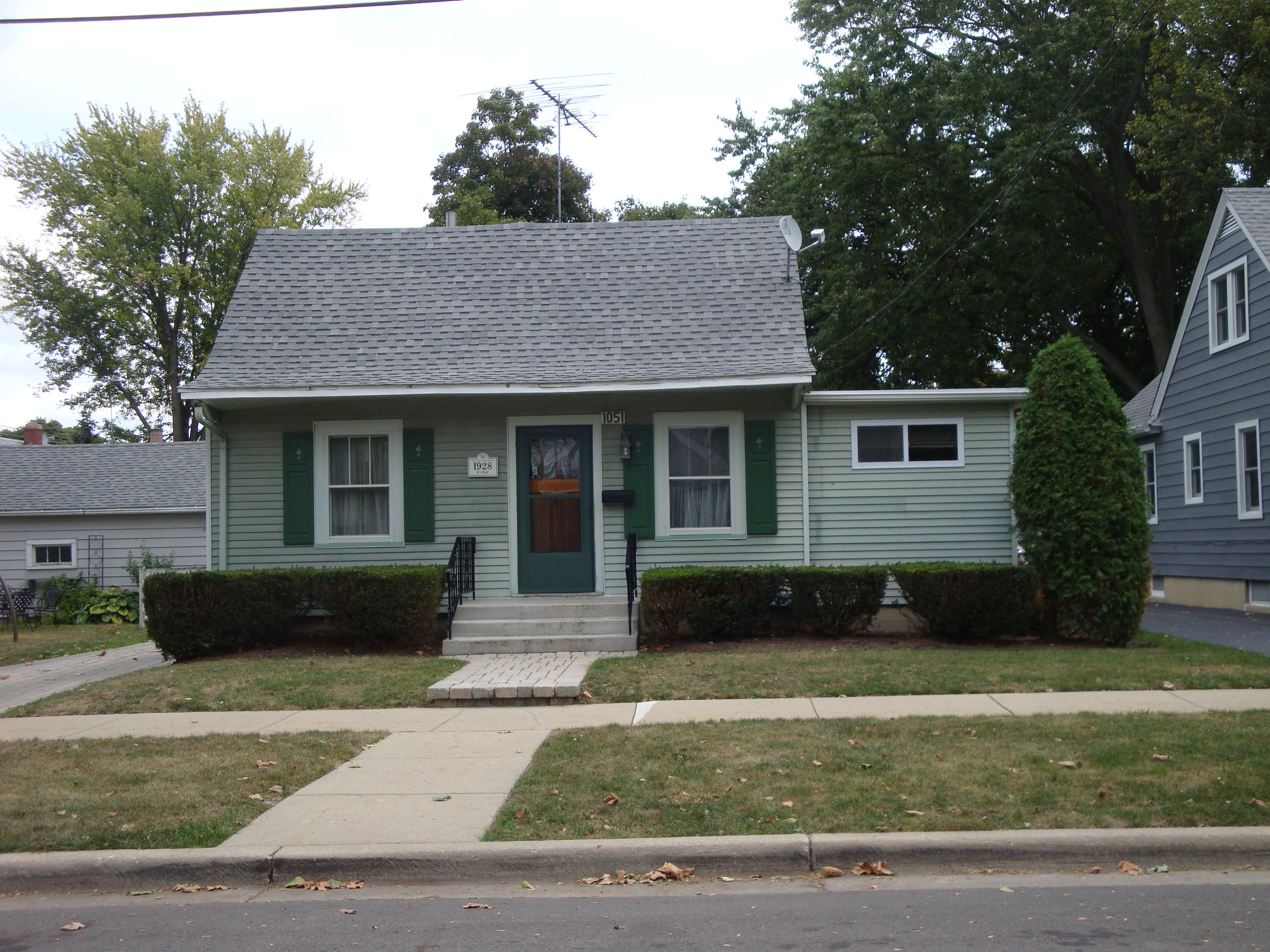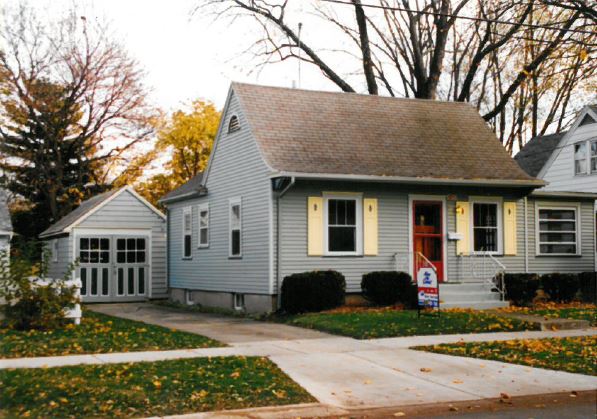1051 LOGAN AVENUE
HISTORIC SIGNIFICANCE
In the 1920s, lots 7, 8, 9 and 10 in the Grote and Church’s 2nd addition to Elgin passed through a number of owners. By 1927, Eva Church and Frank Diehs owned it and sold part of the lots to E. H. Lees and to William Graf. Graf used his lot to build a home on the property in 1928.
Graf owned and operated his eponymous Graf Motor Sales on S. Grove Avenue, dubbed gasoline alley due to the high number of auto dealers and motor shops along the corridor. Graf himself lived at 851 Brook Street, and built 1051 primarily as a rental property, which it remained until 1944.
December 1944 marked the first new owner of the 1051 Logan property since Graf, in the form of John and Frieda Schmokel. Frieda was born in Germany immigrating to Elgin, and John was a machinist for the A.E.&C. Railroad, or the Aurora, Elgin and Chicago Railway. This group served the Fox Valley and after WWI became the C.A.&E., or the Chicago, Aurora & Elgin Railroad in the 1920s.
After John and Frieda passed, their daughters Elly, Betty and Lotty inherited 1051 Logan. A number of years later, it was purchased by a new owner and rehabbed.
ARCHITECTURAL SIGNIFICANCE
1051 Logan Avenue is a one story, rectangular building with a side-gabled roof typical of the Colonial Revival style, frequently referred to as a Cape Code. The Cape Cod is a very common one-story example of the more high-styled two-story Colonial Revivals. Modest architectural details reigns on this example, but the main characteristics remain such as the pronounced front entrance door, windows with double-hung sashes with multi-pane glazing and balanced windows.
TIMELINE OF PREVIOUS OWNERS
Sources: 2000 Heritage Plaque Application; Audio: TextAloud





